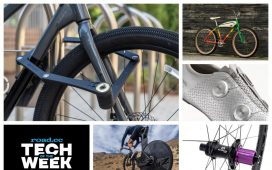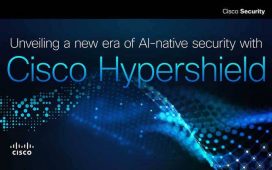With an extensive security background, Sheelagh Brady discusses how her security travel platform came to be and how AI and machine learning will change the world of risk management.
Former Garda Sheelagh Brady is now the chief operations officer of security travel platform S-Man and the co-founder and chief security analyst for SAR Consultancy.
She previously worked with the UN and the EU as a senior security analyst and told Siliconrepublic.com that the S-Man platform emerged from an experience she and her co-founder had in Libya while being evacuated in 2014.
“Travelling through militia held territories we realised there must be a better way to stay informed and reduce risk by harnessing the combined powers of existing and emerging technologies. While we had some systems available to us, they were largely separate standalone systems, that provided a lot of generic information. The nascent idea of S-Man was born.”
‘AI and machine learning provide the opportunity for a huge shift in how organisations manage risk’
– SHEELAGH BRADY
However, it wasn’t until late 2018 and early 2019 that the idea re-emerged as SAR Consultancy took off. “As we grew our business, we began to increasingly see the role technology could play in reducing risk, for us and our clients. The Local Enterprise Office (LEO) in Kildare and DCU Ryan Academy were invaluable in supporting and encouraging us in taking this step,” she said.
“The Feasibility Grant we received from LEO Kildare enabled us to develop the proof of concept at a level that demonstrated the potential for progress beyond available solutions currently on the market.”
Tell me about your own role and your responsibilities in driving tech strategy?
S-Man is accessible through a mobile app and desktop software provides businesses with reliable geo-fenced information for their business travellers and allows them to make informed decisions relating to staff safety in times of crisis.
It also allows organisations to maintain business continuity in times of disruption and crisis, positively impacting the bottom line, enhancing staff morale through tangible compliance with duty of care, and providing peace of mind, while also allowing them to secure assets both home and abroad.
My role in this regard is to examine current and emerging risks, their potential impact and possible mitigation strategies. We then have to identify the type and nature of data that allows us to operationalise these risks so we can harness the power of technology to streamline this process, while structuring it in a way that allows users to interrogate the data in a manner that enables early warning signs of potential risks to staff and their assets.
Secondly, we routinely look to future threats through a process of horizon scanning, looking three to five years down the line, to ensure our solution is robust and maintains its relevance.
Are you spearheading any major product/IT initiatives you can tell us about?
We are now looking to develop the AI and machine learning components of the solution. As this will allow users to draw from a host of different data sources, internal and external, which can be interrogated to make real-time, relevant assessments about the potential for threats to emerge.
Based on this information, organisations and individuals will be able to make critical decisions about what to do in advance of potential risk. In simple terms, the solution will allow organisations and individuals to see early indicators of potential threats to their business activities, allowing them to take corrective action to mitigate any associated risk, which in turn allows them to be proactive in how they deal with risks, which has traditionally been re-active.
How big is your team? Do you outsource where possible?
Our team is small, because to date we have outsourced where possible. This is most apparent in the relation to our IT knowledge; we lacked the technical knowledge to build our proof of concept. However, what we lacked in IT development knowledge we made up for in knowledge about the industry, the gap in the market and the changing demands of the market.
We also used this and our global network to build and hone the user requirements, assessing available products and existing gaps, which allowed us to design a solution that builds on the positive elements of existing solutions, but one that fills the gap and streamlines processes into one single solution, ensuring our solution met the needs of the sector. We may not have known how to build it, but we knew what it needed to do.
So, when looking outward to fill our IT capacity gap, we knew it was critical to find a software production development house that could work with us to translate our user requirements into a product. We found Maestral Solutions.
This relationship has been hugely important in getting the development of our proof of concept right. Looking externally allowed us to access a dynamic team that has global experience in bring product concepts to life. The team at Maestral Solution have a deep understanding of IoT, data science and cloud services, and of emerging technologies which they brought to our solution, which was far beyond what we could have employed in house.
What are your thoughts on digital transformation and how are you addressing it?
The area of security and risk management has yet to effectively optimise data mining and analytics tools that are currently on the market, rather still relying on human resources to record, tabulate and present relevant data.
However, data mining and analytics is better placed for this role, especially for the purpose of finding anomalies, patterns and correlations within large data sets to predict outcomes. Using data analytics, in this context, S-Man enables organisations to ask and answer better questions about risk exposure and potential threats, in the area of security and crisis management, and in so doing, better prepare how to mitigate these.
What big tech trends do you believe are changing the world and your industry specifically?
As the demand for business continuity is changing, so too does the market for business continuity software. Many traditional drivers for deployment of these products remain in place, software offerings have had to become more sophisticated in order to keep up with a more demanding client base.
Gartner’s research predicts that by 2021, 50pc of large enterprises will use an integrated risk management solution to provide better decision-making capabilities.
AI and machine learning provide the opportunity, through the processing of big data, for a huge shift in how organisations manage risk, moving from people to machine power to process data quickly to better identify patterns, anomalies and potential changes in the same.
Furthermore, despite a growing presence of ‘security apps’ from the sophisticated to the basic, they are largely built around mobile phones, utilising cellular networks. However, these can be unstable.
As a result, we are currently exploring the suitability of low-earth orbit satellites with our solution, which we believe has the potential to be a game changer in relation to real-time risk and how individuals are communicated with.
In terms of security, what are your thoughts on how we can better protect data?
Given our background in security, we understand the value of protecting individuals and assets, data is no different in this regard. We are fortunate in relation to timing, that we are not dealing with old technologies, so we are building our solution with security in mind. This is really important to us, as it would be a deal breaker if we built a solution that helps mitigate certain risks, while increasing others.
Want stories like this and more direct to your inbox? Sign up for Tech Trends, Silicon Republic’s weekly digest of need-to-know tech news.






